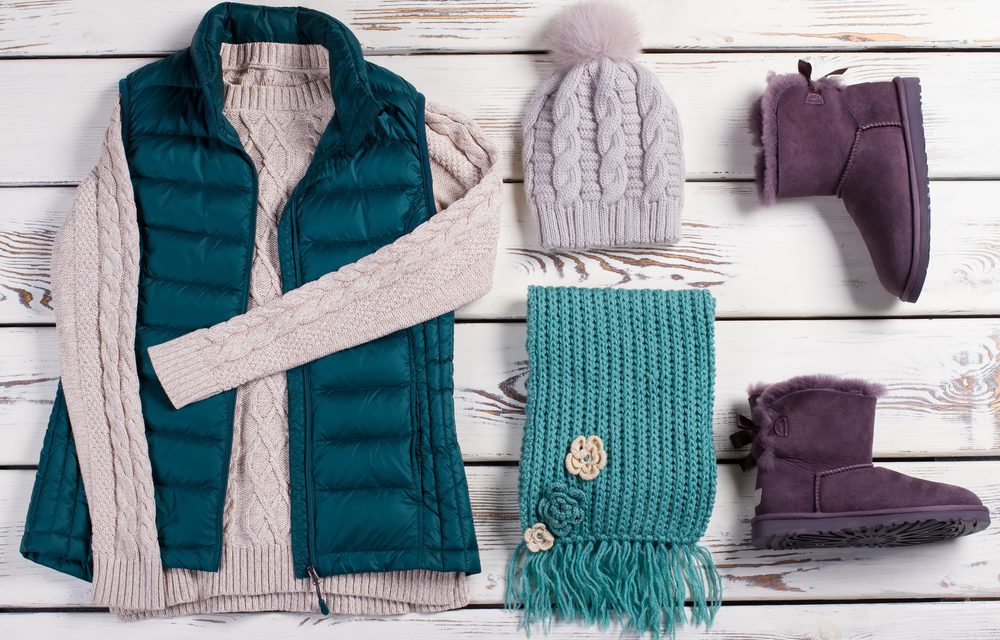When summer arrives, it’s time to say a temporary farewell to the puffy coats, mittens, and scarves that kept you warm all winter long. But before you put them into personal storage, there are a few things you should know about how to store winter clothes properly.
Follow this helpful guide to make sure your winter clothes hibernate safely before the winter snow rolls in again.
How to Clean Your Winter Clothes Before Storing Them
Before you start boxing up your winter coats and heavy sweaters, you should wash and dry them thoroughly.1 This is a crucial step to ensuring that your winter clothes stay free from pests and mildew. As such, here’s a quick and helpful guide for cleaning all of your winter clothes.
Step 1: Wash Your Coats and Other Outerwear
Most winter clothing items are rather delicate. When it comes to your winter coats, you should always check the care instructions before cleaning. That said, there are some basic guidelines you can follow based on the fabric and style of the garment:
- Nylon coats and puffy jackets – Nylon coats and puffy jackets filled with down are washing machine safe.2 Set your machine to gentle and use cold water with regular laundry detergent.
- Wool coats – You’re best off taking your wool coats in for dry cleaning, but you can also wash them by hand at home. Be sure to use cold water and a wool-specific detergent. Then, lay wool coats flat to dry.
- Fleece – Turn your fleece outerwear inside-out, toss it into the washing machine, and use the gentle setting with cold water. It’s best to let fleece air dry as opposed to putting it in the dryer.
If you have leather jackets, fur coats, or coats that use suede, take them to your neighborhood dry cleaners for proper care.
Hats, scarves, gloves, earmuffs, ski masks, snowsuits, and other outerwear should be washed according to their individual care instructions, but you can also use the following general rules of thumb:
- Fine or delicate fabrics like cashmere and wool should be dry cleaned
- Durable winter fabrics like cotton and alpaca can go in the washing machine
Try to avoid washing your winter coats with the rest of your dirty laundry due to their specific washing instructions.
Step 2: Wash Your Winter Boots
The boots and shoes that keep your feet warm all winter deserve a little TLC after a long season. And if you clean them before putting them in storage, they’ll be ready for you next year.
You can easily clean winter boots and shoes with warm, soapy water and a cloth. For tough salt stains, a cup of water mixed with a tablespoon of distilled vinegar should do the trick. And you can use a toothbrush or wire cleaner to remove caked-in dirt and salt pellets from the soles.
How to Store Your Winter Clothes
Before you start packing up your winter clothes, make a plan for where you’re going to store them. Ideally, there should be storage space specifically for winter clothing. If you don’t have enough closet space for your winter clothes, what other storage options do you have? Often, an affordable self-storage unit is a simple solution, whether you’re looking to stow away coats and scarves or skis and snowmobiles.
Once you’ve decided on a place, here’s the best way to store every item in your winter wardrobe.
Step 1: Store Winter Coats and Large Outerwear
Most winter coats and large pieces of outerwear can be stored in plastic storage bins with lids. Gently fold each item before placing it into the bin.3 When packing, be sure to:
- Button up – You should loop all the buttons and close all the zippers before you fold your items for storage. This helps them retain their shape and avoids extra wrinkling.
- Pack lightly – Your winter coats need room to breathe over the hot summer, so don’t overstuff your storage bins.
You can also store your winter coats in vacuum-sealed plastic storage bags.
Step 2: Store Sweaters and Long-Sleeved Shirts
Your sweaters and long-sleeved shirts can also go into plastic storage bins. These can be folded gently, but rolling them can help prevent wrinkles and optimize storage space.
That said, you’ll want to fold anything that’s made from a delicate fabric. For extra protection, separate each garment with a sheet of acid-free tissue paper. This can help prevent:
- Snagging
- Discoloration
Always remember to place heavier materials at the bottom of your storage bin and more buoyant materials toward the top.
Tip: You can store your small outerwear items, like hats, gloves, and scarves, with your sweaters and shirts.
Step 3: Store Boots
There are a few items you need to properly store your winter boots:
- Plastic shoe boxes
- Boot shapers
- Tissue paper
Stuff the boot shapers into the boots to help them keep their shape. Then, wrap each boot in tissue paper before placing them into the boxes.
Price Self Storage—Self-Storage Options for Any Season
Once you’ve packed up your winter clothes, you’ll need a clothing storage space to keep them. Price Self Storage has the extra space you need. Price Self Storage is here for all your springtime needs. Aside from how to store winter clothes, we have guides on how to move in the rain and mudroom organization tips to help you navigate the change in seasons!
Whether you need a little or a lot of space, we have size options to fit your winter wardrobe. And if you aren’t sure how much space you need for your winter garments, our storage size guide can help you make an estimate during your selection process.
Find winter clothes storage with Price Self Storage.
Sources:
- Clean Laundry. How to Store Winter Clothes: A Complete Guide. https://cleanlaundry.com/how-to-store-winter-clothes-a-complete-guide/
- Make Space. How to Wash and Store Your Winter Coats for Spring. https://makespace.com/blog/posts/how-to-wash-and-store-winter-coats/
- Apartment Therapy. How to Store Your Winter Clothes. https://www.apartmenttherapy.com/storing-winter-clothes-36717824










